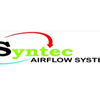Understanding the Importance of Air Handling Unit Design in HVAC Systems
Air Handling Units (AHUs) are the unsung heroes of HVAC systems. These critical components are responsible for regulating airflow, controlling temperature and humidity, and maintaining indoor air quality. In this comprehensive guide, we'll explore the fundamental principles and factors that go into designing an efficient AHU to ensure optimal HVAC system performance. If you're keen on creating a comfortable, energy-efficient, and healthy indoor environment, read on.
Fundamental Principles and Factors to Consider in Air Handling Unit Design
a. Determining Airflow Requirements for Different Applications
- Assess occupancy levels, building type, and function to establish airflow needs.
- Calculate air change rates to ensure adequate ventilation.
b. Ventilation Rates: Ensuring Sufficient Fresh Air Supply
- Comply with ASHRAE standards for ventilation.
- Perform outdoor air intake calculations to maintain indoor air quality.
c. Achieving Precise Temperature and Humidity Control through Proper Equipment Selection and Placement
- Choose appropriate cooling coils, heating elements, and humidifiers/dehumidifiers.
- Consider placement for optimal performance and energy efficiency.
d. The Role of Filtration Systems in Maintaining Clean Indoor Air Quality (IAQ)
- Understand MERV ratings and filter types, including HEPA filters.
- Implement proper maintenance practices to ensure optimal IAQ.
Balancing Energy Efficiency with Performance: Incorporating Energy Recovery Systems and Variable Speed Drives
a. Energy Recovery Systems (Enthalpy Wheels/Heat Exchangers)
- Harness waste energy to improve HVAC system efficiency.
- Consider enthalpy wheels or heat exchangers for heat and moisture recovery.
b. Variable Speed Drives (VSDs)
- Utilize VSDs to modulate fan speeds and reduce energy consumption.
- Enhance system flexibility and efficiency with precise control.
The Importance of Proper Ductwork Design to Ensure Optimal Air Distribution
a. Determining Duct Sizes and Layouts
- Base duct sizes and layouts on airflow requirements.
- Perform pressure drop calculations for optimal distribution.
Conclusion: Designing an Air Handling Unit that Delivers Comfort, Efficiency, and Indoor Air Quality
Efficient air handling unit design is central to the overall performance of HVAC systems. By considering airflow requirements, ventilation rates, temperature and humidity control, filtration, energy efficiency, and proper ductwork design, you can create an AHU that delivers comfort, efficiency, and excellent indoor air quality.
When it comes to implementing these principles and achieving AHU excellence, Syntec Airflow System is a trusted partner. With a reputation for providing top-quality AHUs and expertise in HVAC solutions, Syntec Airflow System can help you design and implement an air handling unit that meets your specific needs while prioritizing comfort, energy efficiency, and indoor air quality. For a brighter and cleaner indoor environment, explore the possibilities with Syntec Airflow System.

No comments yet